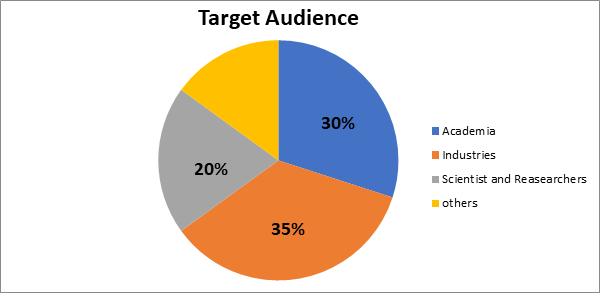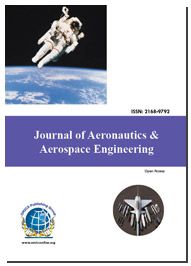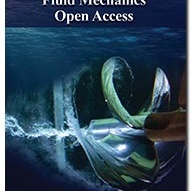Theme: Emphasizing Latest updates and Technological advancements in Aerodynamics & Fluid Mechanics
Aerodynamics Meet 2018
ME Conferences warmly invites all the global participants to attend "International Conference on Fluid Dynamics and Aerodynamics” during the month of October 15- 16, 2018 at Helsinki, Finland, Europe.
Aerodynamics Meet 2018 will be a best platform for the Researchers, Scholars and the students who deal with the areas of Mechanical engineering, Aerospace engineering, Aeronautics, Computational fluid dynamics, Structural engineering and other fields which are related to Ocean Currents, Defense, Automotive, Nuclear and Atomic energy, Oil piping engineering and evolution of stars.
Why to Attend?
Aerodynamics Meet 2018 Conference brings together researchers, young researchers, scholars, Experts and Students from the universities spread globally all over the world at the one place which are related to the area of Mechanical engineering, Aerospace engineering, Aeronautics, Computational fluid dynamics and other related field for Collaboration and interaction of recent development and technology in the field of Science.
It is a Great Opportunity to attend the presentations which will be delivered by Scientists, Researchers, Experts from all over the globe. Grab the place to participate in sessions on specific topics on which the conference is expected to achieve progress, Global platform for sharing the ideas, share your knowledge which lead to the new innovative ideas and advanced developments and innovations in Fluid & Aerodynamics.
Target Audience
- Researchers
- Scientists
- Aerospace Engineers
- Mechanical Engineers
- Professors
- Stress and Design Engineers
- Students
- Managers & Business Experts
- Advertising and Promotional Executives
Aerodynamics is the study of moving air which includes the interaction between the air and solid bodies when they are in contact with each other. It is the branch of dynamics that deals with the motion of the air and other gaseous fluids and with the forces acting on bodies in motion relative to such fluids. Studying the movement of air around an object permits us to measure the forces of lift, which permits an airplane to overcome gravity, and drag, which is the resistance a flying machine “feels” as it moves through the air. Everything moving through the air (counting airplanes, rockets, and winged creatures) is influenced by optimal design and Aerodynamics.
Track 1
Aerodynamic Flows are classified into different types based on their speed and properties. Subsonic flows are flow fields in which the air speed field is always below the local speed of sound. Transonic flows include both regions of subsonic flow and regions in which the local flow speed is greater than the local speed of sound. Supersonic Flows are defined to be flows in which the flow speed is greater than the speed of sound. hypersonic flow, refers to flows where the flow speed is much greater than the speed of sound. Aerodynamics disagree on the precise definition of hyperflow. Supersonic stream behaves differently from subsonic stream. Liquids respond to contrasts in weight; weight changes are how a liquid is "told" to reply to its environment. Hence, since sound is in fact an infinitesimal pressure distinction propagating through a liquid, the speed of sound in that liquid can be considered the fastest speed that "data" can travel in the stream. This distinction most clearly shows itself in the case of a fluid striking an object. The presence of shock waves, along with the compressibility impacts of high-flow speed fluids, is the central distinction between the supersonic and subsonic optimal design administrations.
- ​Steady and Unsteady Aerodynamic flow
- Turbulence
- Air and Flow seperation
- 3-D flow structure
- Flow reattachment
- Recirculation Flow
Track 2
External Aerodynamics is the which involves the flow of air on the solid objects externally. The lift and drag on an airplane is one of the best example for the external aerodynamics. External aerodynamic streams can be frequently experienced in the industry with applications counting the liquid movement over a level plate (inclination or parallel to the free stream speed), the stream over bended surfaces such as a circle, barrel, airfoil, or turbine blade, air streaming around a plane, ground vehicles or water streaming around submarines.
Track 3
Internal aerodynamics is the study of flow of air and gaseous fluid through the pipes and passages of the solid objects. The example for the Internal aerodynamics are the study of the airflow through a jet engine and through the air conditioning pipe. In fluid mechanics, an inner flow is a stream for which the liquid is restricted by a surface. Hence the boundary layer is incapable to create without in the long run being compelled. The inner stream setup speaks to a helpful geometry for warming and cooling liquids utilized in chemical handling, natural control, and vitality change advances. Applications in this manner incorporate streams in channels, ducts, cavities, jet motors or wind turbines.
Track 4
Compressible flow and Incompressible flow
According to the theory of aerodynamics, the flow is said to be compressible if the density changes with the stream line. The Mach number in the flow exceeds 0.3. Incompressible flow is a flow in which density is constant in both time and space. A flow is classified as being compressible or incompressible depending on the level of variety of density amid stream. Incompressibility is an estimation and a stream are said to be incompressible in the event that the thickness remains about constant all through. The densities of fluids are basically constant at a specific temperature and thus the stream of fluids is ordinarily incompressible. So, fluids are frequently referred to as incompressible fluids.
Track 5
Automotive aerodynamics is the study of the aerodynamics of the s vehicles which run on the roads. Its main goals are reducing drag and wind noise, minimizing noise emission, and preventing lift forces and other causes at high speeds. Air is also considered a fluid in such different cases. In some case for the racing vehicles, it may also be important to produce downforce to improve traction and thus it results in cornering abilities. One perspective point of car design that plays a major part in saving fuel consumption is aerodynamic efficiency - in other words, making beyond any question a car meets as little resistance as conceivable from the examine it voyages through. The more effectively beneficial it is, the less fuel it will utilize to travel along at any given speed. The faster the car moves, the more imperative it is to keep the air resistance - drag - to a least. The aerodynamic effectiveness of a car's shape is measured by its co-efficient of drag.
- Car Aerodynamics
- Train Aerodynamics
- Vehicle Design and Technologies
Track 6
Aircraft aerodynamics is the branch of aerodynamics of moving the planes on the air. The airfoil shape of an airplane's wings it tends the airplane to lift and makes it possible for the airplane to fly. As an airplane's wings are curved on the top and flatter on the bottom of the plane, air flows over the top of the wing more than below the wing which results in the less air pressure above the wing.Lift is the upward acting force, that is required to hold an aircraft in the air. This force is mostly generated by the wings of the aircraft. Thrust is a forward force required to overcome the opposite drag force and move an aircraft forward.Drag or air resistance is a force that resists or pulls back on the movement of an aircraft through air by acting opposite to the direction of movement.
- Flight Dynamics
- Flight Vehicle aerodynamics
- Helicoptor Aerodynamics
- Unmanned Aircraft
- Space shuttles and Satellites
Track 7
Wind engineering is a branch of mechanical, Structural engineering, meteorology, and applied physics. It is used to analyze the effects on wind in the natural and man-made environment. It is also included in the discipline of aerodynamics. It is used to estimate the atmospheric models, atmospheric boundary layer wind tunnels, Open jet facilities on the wind mill. The reason of the Wind Building Division is to progress proficient knowledge and improve the hone of wind designing in gracious building plan, development and operations and to make suggestions for progression of logical information and practice in wind engineering-related issues.
- Wind Energy
- Vertical Axis Wind turbines
- Horizantal Axis Wind turbines
- Wind effect on Buildings
- Wind Impact on Bridge
- Wind Tunnel and Flow Visualization
Track 8
The study of generation of noise due to Aerodynamics affect is called Aero-acoustics. Aero-Acoustics provides such approximations and at the same time a definition of the acoustical field as an extrapolation of an ideal reference flow. The difference between the actual flow and the reference flow is identified as a source of sound. The generation of sound by a turbulent stream is the most common physical impact related with the field of aeroacoustics. The prefix aero implies air, in any case, the field of aeroacoustics is not limited to flow-induced noise in air. Aeroacoustics is concerned with the common interaction between a background stream and an acoustics field. For illustration, in case you were examining the reflections of sound off a shear layer or how the stream in a suppressor influences transmission misfortune, you would be examining aeroacoustics. Aeroacoustics Observations can include impacts that change an acoustic field in the presence of a stream, such as turbulence, local variations in material physical and chemical properties, convection. Numerically understanding aeroacoustics theory falls related to the field of computational aeroacoustics.
Track 9
Propulsion is to push the object forward. Propulsion system uses engine as the power source and fuel is the medium to generate the power. It has a wide range of applications in the aerospace sector. On airplanes, thrust is created through a rule of Newton's third law of action and reaction. A gas, or working liquid is accelerated by the motor and the response to this increasing speed produces a constrain on the engine. A common determination of the thrust condition appears that the sum of thrust produced depends on the mass flow through the motor and the exit speed of the gas. Distinctive propulsion systems produce thrust. We will talk about four vital propulsion systems: the propeller, the turbine (or fly) motor, the ramjet, and the rocket. Newton's law of movement, shows that a plane propulsion system must serve two purposes. To begin with, the thrust from the propulsion system and the thrust from the propulsion. Propulsion is used in varies fields such as Missile technology, Automotive, Aircraft and Marine industries. It has a wide range of applications in the defense sector.
- Aircraft Propulsion
- Marine Propulsion
- Space Propulsion
- Missile Aerodynamics
- Rockets and Weapon Launchers
- Magnetic Propulsion Systems
Track 10
Aero- Elasticity is the branch of physics and it studies the interaction between elastic and aerodynamic forces. It occurs basically when the elastic body flows in the fluid. The department has a history of aeroelastic experimentation, investigations, and computational achievements. Accomplishments incorporate vacillate concealment and blast stack and buffet lightening advancements, dynamic flexible/aeroelastic wing improvement, contributing to flight ripple clearance, and dispatch vehicle elements appraisals. Vehicle impacts have included commitments to the ripple clearance of numerous military warrior and assault airplane, commercial transports, and tiltrotors. Aeroelastic loads and execution information have been procured for numerous helicopter rotor-blade systems.
- Static Aeroelasticity
- Dynamic Aeroelasticity
- Transonic Aeroelasticity
- Aircraft Aeroelasticity
​
FLUID MECHANICS is the branch of physics which deals with the mechanics of fluids and gases and the forces acting on fluids. Fluid mechanics is divided bases on the state of the fluid, the study of fluids at rest is called static fluid; and dynamic fluid is the study of the effect of forces on fluid motion. Fluid Mechanics has a wide range of applications, it is used to calculate the forces and moments on the aircraft. It is used to determine the mass flow rate on the pipe. It is used to calculate the Computational fluid dynamics calculations and expressions on the aircraft. Fluid Mechanics is used to solve the problems related to the varies properties of fluid such as velocity, density and pressure with respect to the space and time.
Track 11
Laminar flow is the flow which is parallel to the layer and flows with no disruption. It tends to flow at low velocities. Turbulent flow is the flow which flows uneven to the surface. Laminar is a smooth flow and Turbulent is a rough flow. The flow can be calculated by using the Reynolds number. Laminar flow is the opposite of turbulent flow. It is the smooth flow of a fluid over a surface. Though a boundary layer of air "sticks" to a wing, the air overtop should be moving quickly and smoothly to reduce friction drag. Engineers and aircraft designers design aircraft with laminar flow over their wings to make them more aerodynamic efficient and for the better performance.
Track 12
CFD method is used to analysis and solving the problems which are related to Fluid flows, computers are used to formulate the numerical expressions between liquid and gas. CFD has many applications in industries like automotive, Defense, Aircraft, physical science and energy. CFD is also used to style fuel systems and engine core compartments, cockpit and Cabin ventilation in the aircrafts. It is also used in the design of missiles, and submarines. Computational fluid dynamics offers the aerodynamicist an implies of investigating a more extensive range of vehicle shapes than can ordinarily be accomplished, in accessible time scales, with wind burrow testing alone. The sort of demonstrate utilized in the recreation is regularly subordinate on the exactness required, the computer control accessible and the time scale perform the analysis.
- Computational Magnetohydrodynamics
- Finite method analysis
- Fluid Simulation
Track 13
The flow of fluid on earth and planets on the large scale comes under the examination of Geophysical Fluid Dynamics. This effect is caused to the motion of fluids in the ocean and outer core. Two highlights that are common to numerous of the wonders considered in geophysical fluid dynamics are revolution of the liquid due to the planetary turn and stratification. The applications of geophysical fluid dynamics do not incorporate the circulation of the mantle.
- Atmospheric circulation
- Ocean Current
- Ocean Dynamics
- Geodynamics
- Buoyancy
- Geostrophic Wind & Current
Track 14
The transfer of heat from one body to the other body by the medium is called Heat Transfer. The rate of change of heat transfer is directly proportional to the temperature difference between the bodies. The three modes of heat transfer are Conduction, Convection and Radiation. Some of the research topics are
- Heat transfer on the internal and external of the missiles
- Heat fluctuations in the pipe
- Heat transfer in the Automotive and Aircraft domain
- Cooling Techniques
- One Dimensional Conduction
- 2-D and 3-D Heat transfer
- Condensers and Evaporators
Track 15
Pipeline engineering is the industry in which a system of pipes is used to convey fluids from one place to the other place. The design in piping should be efficient to transport the fluid. The Fluid Mechanics plays a prominent role in the Pipeline engineering. The Laminar and Turbulent flows in the pipe can be estimated for the design and analysis of the Pipes and ducts. Fluid Mechanics plays a predominant role in designing and construction of pipes and ducts. Pipeline engineering is majorly used to transport liquid from one destination to the other.
Track 16
It is the part of science in which the mechanical forces acting on or exerted by fluids. It is a physics related to the motion and action of water and other liquids. It is the sub-domain of fluid dynamics that deals with liquids, including hydrostatics and hydrokinetics. In spite of the fact that both aero and hydro CFD tend to be based on Navier-Stokes descitization, Hydrodynamics particular codes have advanced in an unexpected way due to the more laminar nature, as well as distinctive needs. CFD for the most part begun in aero, the fast improvement into a expansive run of liquid consistency models, turbulence treatments with Reynolds numbers, they are getting quality sufficient which comes about to be utilized in a few hydro applications.
Track 17
Bio fluid mechanics play an important role in understanding the Cardiovascular system, as it is important to understand the forces involved in Movement of Blood cells, as well as the interaction between blood cells and the vessel wall. Fundamental Fluid Mechanics, which is important for the understanding of the blood flow in the cardiovascular circulatory system of the human body. It involves the interaction of fluid with Biological Systems, as well as with technological devices. The study of flows in prosthetic elements, Extra-corporeal Flow systems, micro-devices involves a broad range of industrial fluid mechanics.
Track 18
Nano-fluid is a fluid which contains Nano-particle. Nano-particle in the fluid are used to compute the problems based on the computational fluid dynamics. The thermophysical properties related to the fluid, are Viscosity, thermal conductivity, Specific heat capacity and density. Nanofluids have novel properties that make them possibly valuable in numerous applications in heat transfer, counting microelectronics, fuel cells, and hybrid-powered engines, [motor cooling/vehicle warm management, household fridge, chiller, heat exchanger, in pounding, machining and in boiler flue gas temperature decrease. They display improved thermal conductivity and the convective heat exchange coefficient compared to the base fluid. Information of the rheological conduct of nanofluids is found to be basic in choosing their reasonableness for convective heat exchange applications.
Track 19
Fluid Flow is a part of fluid mechanics and deals with Fluid Dynamics. Fluids such as gases and liquids in motion are called as fluid flow. Motion of a fluid induce unbalanced forces or stresses. The motion continues as long as unbalanced forces are applied. The flow continues as long as water is available. Fluid is a substance, such as liquid or gas that can flow, has no fixed shape and offers little resistance that has no external stress. Flow is defined as the quantity of fluid (gas, liquid, vapor or sublimate) that passes a point per unit time.
Track 20
Newtonian and Non-Newtonian Fluids
A Newtonian fluid is a fluid in which the viscosity doesn’t change, no matter the amount of shear applied on it at a constant temperature. It has a linear relationship between viscosity and shear stress. Newtonian liquids are the least difficult numerical models of liquids that account for viscosity. While no real liquid fits the definition perfectly, numerous common fluids and gasses, such as water and air, can be accepted to be Newtonian for calculations under ordinary conditions. The few examples of Newtonian Fluids are Gasoline, Alcohol and Oil.
Non-Newtonian is a fluid when the shear stress is applied on it, the viscosity of the fluid also changes. The behavior of the fluid can be described in four ways. In any case, non-Newtonian liquids are moderately common, and incorporate oobleck (which gets to be stiffer when vigorously sheared), or non-drip paint which gets to be thinner when sheared. Other illustrations incorporate numerous polymer arrangements which display the Weissenberg impact, liquid polymers, numerous solid suspensions, blood, and most profoundly viscous liquid. Dilatant, Quicksand, Pseudo plastic (The more the shear stress applied on the body the less will be the viscous it becomes),Corn flour and water are the examples for the Non-Newtonian fluids.
Related Societies
Asia Pacific & Middle East
Asian Business Aviation Association (ASBAA), Australian Business Aircraft Association, Middle East Business Association, The Association of Aerospace Industries (Singapore) or AAIS, The Association of Aerospace Industries (Singapore), Aeronautical Society of India, Royal Aeronautical Society Australian Division.
Europe
British Business and General Aviation Association BBGA, Berlin- Brandenburg Aerospace Alliance, EBAA – European Business Aviation Association, Switzerland, British-Italian Society, European Mechanics Society, The leading French aerospace society(AAAF), German Business Aviation Association.
World
British-Italian Society, WSEAS - World Scientific and Engineering Academy and Society, American Society of Thermal and Fluids Engineers (ASTFE), The American Society of Mechanical Engineers, European Mechanics Society, American Society of Thermal and Fluids Engineers (ASTFE), The Council of European Aerospace Societies(CEAS), The leading French aerospace society(AAAF), The American Institute of Aeronautics and Astronautics, Society of Aerospace Engineers (SAE), The International Coordinating Council of Aerospace Industries Associations.
-
2nd International Conference and Exhibition on Industrial Engineering, November 16-18,2015 Dubai, UAE
-
6th Global Experts Meeting on Nanomaterials and Nanotechnology, April 21-23,2016, Dubai, UAE
-
2nd International Conference on Fluid Dynamics and Aerodynamics, October 19-20, 2017 Rome, Italy
-
3rd International Conference on Automobile Engineering, September 28-29, Berlin, 2017, Germany
-
5th International Conference on Fluid Dynamics and Aerodynamics, October 02-04, 2017, Las Vegas, Nevada, USA
-
Microfluidics and Non-Equilibrium Gas Flows Conference, Feb 28 2018- Mar 02 2018, Strasbourg, France
-
12th EFMC European Fluid Mechanics Conference 2018, Sep 09 2018 – Sep 13 2018, Vienna, Austria
-
73rd Global Meeting of the APS Division of Fluid Dynamics, Nov 24 2020 - Nov 26 2020, Chicago, United States
-
74th Annual Meeting of the APS Division of Fluid Dynamics, Nov 21 2021 - Nov 23 2021, Phoenix, United States
-
ICFDT 2018: 20th International Conference on Fluid Dynamics and Thermodynamics, Mar 22 and 23rd 2018, Prague, Czechia
-
The 2018 American Society of Thermal and Fluids Engineers (ASTFE) Conference, Mar 4th to Mar 7th, 2018, Fort Lauderdale, Florida, USA
-
19th International Symposium on Applications of Laser and Imaging Techniques to Fluid Mechanics, Jul 16th to July 19th, 2018, Lisbon, Portugal
-
12th European Fluid Mechanics Conference, Sep 9th to Sep 13th, 2018, Vienna, Austria
-
ICAAA 2018: 20th International Conference on Applied Aerodynamics and Aeromechanics, Netherlands.FAN 2018 – International Conference on Fan Noise, Aerodynamics, Applications & Systems, Apr 18th to Apr 20th, 2018, Darmstadt, Germany.
Aerodynamics Meet 2018 feels proud and happy to invite scientists, professors, specialists, exhibitors and students from across the world to present their brilliance on a common platform. It is the prestigious moment that 3rd International Conference on Fluid Dynamics and Aerodynamics is going to be held on October 15-16, 2018 in Finland, Germany.
The Organizing Committee is looking up for an excellent and informative conference which includes the lectures, Sessions, Symposia, Workshops on a varies related topics, Presentations and different programs for participants across the world. We gladly invite you all to join us at the Aerodynamics Meet 2018, where you will be sure to have a huge experience with scholars and researchers from the world.
Overall Analysis
The Fluid Mechanics and Aerospace industries are the fastest growing sectors in the European union, with the rise in requirement of more advancement in the field of defense and military infrastructure, and the need of more passenger traffic, air and water became the basic essential to address the issue of the above conference. It is estimated that air traffic is in huge demand and will grow at the rate of 4.8% yearly. The German aerospace industry makes major investments in the areas of research and development. The top companies in this industry invest around 17 percent of their revenues on these areas. The European Aeronautical industry is an industry deals with development and manufacturing products like aero engines, unmanned aerial vehicle, Missiles and Rockets for the Military need.
Aerospace industry requires efforts in R&D; hence foreign investors have an interest to invest on the Fluid mechanics and Aerodynamics related domain in the R&D for the betterment of the Aerospace industry. It is estimated that air traffic is in huge demand and will grow at the rate of 4.8% yearly. The German aerospace industry makes major investments in the areas of research and development. The top companies in this industry invest around 17 percent of their revenues on these areas. The total turnover of EU aerospace sector is €128 billion with the highest spending in R&D. In the future there will be a demand for 26,000 jet airline and aircrafts approximately to fill the need of air traffic across the globe, so the growth is huge for this industry. The EU has launched a new initiative called Clean Sky in 2008. It is a public- private partnership worth €1.6 billion which will help the industry in R&D. To encourage FDI in Aerospace, the EU commission has asked member states to remove barriers for foreign investments in Aerospace sector, so France government has followed the EU initiatives and encouraged FDI in aerospace sector; and UK also doesn’t discriminate between domestic and foreign investors. This results in benefits through low tax rates to investors in this sector
Aerospace industry requires endeavors in R&D; thus, outside financial specialists have an enthusiasm to contribute on the Fluid mechanics and Aerodynamics related area in the R&D for the improvement of the Aerospace business. It is estimated that air traffic is in huge demand and will grow at the rate of 4.8% yearly. The German Aerospace business makes real interests in the zones of R&D work. The aggregate turnover of EU aviation area is €128 billion with the most elevated spending in R&D. In future, there will be a demand for 26,000 airlines and airplanes roughly to fill the need of air movement over the globe, so the development is gigantic for this industry. The EU has propelled another activity called Clean Sky in 2008. It is an open private association worth €1.6 billion which will help the business in R&D. To energize FDI in Aerospace, the EU commission has approached part states to expel boundaries for outside for the Outside investors in Aerospace area, so France government has taken after the EU activities and supported FDI in aviation division; and UK also supported this activity. This outcomes in benefits through low tax rates in this sector.
Importance and Industrial scope
Fluid Dynamics and Aerodynamics plays the main role on the global market in Aerospace industry. It provides the employment for more than 500,000 people and generated a turnover of close to EUR 222 billion. The EU is the top place to manufacture civil aircraft, it includes helicopter, aircraft engines, parts and components of vehicle engines. The employment in the aerospace industry is major in the UK, France, Germany, Italy, Spain and Sweden. Due to high productivity and despite high employment costs, the sector is in profit. A huge amount is spent on R&D which results in R&D employment and will increase the patent applications.
Why Helsinki?
The city has a high density of eminent research institutions. One of the example for the research in the Aerospace domain is Helsinki University. With a couple of special cases, most Finnish safeguard, aviation and security organizations are exclusive SMEs. Total turnover in 2016 was roughly 1.4 billion Euros out of which ca. 46 % was trades. Coordinate work in 2016 was ca. 6100. The protection showcases in obviously the most critical one, since it represented ca 55-60 % of the turnover of the AFDA participation. Global markets and rivalries are crucial for Finnish organizations. Items delivered by AFDA part organizations are notable everywhere throughout the world and utilized by more than 30 national military. Helping part organizations in their fare exercises and systems administration are among AFDA's needs.
Education platforms in Europe
European Countries has grown vastly in the field of aerospace engineering in recent years and many companies has setup the industries in Europe to increase the need in demand for Air Carriers. Europe has many Aerospace engineering universities and research centers making it accessible for both national and international students who wish to pursue studies in the field of Aerospace Engineering.
Target Audience
The conference discusses the latest research outcomes and technological innovations in the field of Aerodynamics, Scientists, Researchers, Industrialists, students related to the Aerodynamics and Exhibitors to exchange and share their views on critical aspects of Otolaryngology research. The event is organized to provide an exclusive platform for new researchers, scholars and educators to present and discuss the most recent innovations in the Aerodynamics and Aerospace industry.

The Top Universities in the World for Aerospace Engineering
- Stanford University
- Georgia Institute of Technology
- Massachusetts Institute of Technology
- California Institute of Technology
- University of Michigan
- University of Texas
- Purdue University
The Top Universities in the Europe for Aerospace Engineering
- Teesside University, Middlesbrough, UK
- Politecnico di Milano, Italy
- Aalto University, Finland
- University of Pisa
- Technical University of Berlin, Germany
- Technical University of Munich, Germany
The Top universities in the Finland
- Helsinki University of technology
- Aalto University
- University of Turku
- University of Eastern Finland
- University of Lapland
- University of Oulu

Top Aerospace companies and their revenue
- Airbus $78.7 billion
- Lockheed Martin $45.4 billion
- United Technologies $33.1 billion
- Northrop Grumman $4.7 billion
- Raytheon $23.7 billion
- General Electric $21.9 billion
- Finmeccanica $19.4 billion

Major Aerospace Associations around the World
- Aerodynamic Testing Association
- Aircraft Research Association
- The Low Speed Aerodynamics
- Research Association (LSARA)
- European car aerodynamic research association
- The Airship Association
- American Physical Society
- The Japan Society of Fluid Mechanics
- National Society of Fluid Mechanics and Fluid Power IIT Bombay
- The Airship Association
Major Aerospace Associations around the Europe
- French Aerospace Industries Association, France
- German Aerospace Industries Association, Germany
- Italian Industries Federation for Aerospace Defense & Security, Italy
- Defense and Security industries, UK
- Association of Finnish Defense and Aerospace industries, Finland

Glance at Market and Funding for the new Research
The European Commission’s biggest ever investigate and advancement subsidizing program, with an add up to budget of over €70bn running from 2014 to 2020. It is organized around three columns: Amazing Science, Industrial leadership and Societal Challenges. Aviation is arranged inside the Societal Challenges column and falls inside the ‘Smart, Green and Integrated Transport’ region .
The European Countries point is to create (and additionally illustrate) get through innovations for the common AIRCA market to cut AIRCRA emission and noise and secure the future worldwide intensity of the European flying industry. European airspace and its air traffic management (ATM) started a commission and the funding program is overseen by the SESAR Joint Undertaking. European airspace and ATM methods will be moved forward by modernizing ATM through the definition, advancement, approval and sending of unused innovative and operational ATM arrangements and there is financing accessible to associations wishing to participate in this try.
Growth: Scope and Projection for next 5 years in the Aerospace Engineering and Aerospace Industry
One of the most challenging areas of engineering, Aerospace Engineering and the industries is to deal with the development of innovation in the field of aviation, defense and space systems. Aerospace Engineering involves design and manufacturing of hi-tech systems; hence the engineer requires possessing manual, technical and mechanical Skills. This space specializes in planning, development, advancement, testing and upkeep of commercial and military discuss carriers and spacecrafts. Aeronautical courses specialize in the development and plan of aircrafts, rockets and helicopters. Astronautical Designing incorporates space carriers, rockets and space stations.
The scope of the aeronautical engineering is increasing vastly and with the growth in population and there is a huge requirement of the aeronautical industry. The turnover revenue for the Aerospace industry in 2013 is 140 billion Euros and in 2015 is 222 billion Euros. Worldwide Aerospace and Defense (A&D) part incomes developed by 2.4 percent to US$674.4 billion out of 2016, somewhat over the estimated gross Domestic Product(GDP) development of 2.3 percent. The top 100 Aerospace organizations added revenue of US$15.7 billion in incomes, with development principally determined by the European business. The aerospace industry has a huge revenue growth.
The best aerospace companies are investing £20 million with alongside government in the skills that will take the sector to new heights It is estimated that in the next five years the development and innovation in the aerospace industry will be developed so vast and we can also see the further developments in the Aerospace industry. Six ventures will share £80 million for aviation research to offer assistance convey development and innovation in key ranges of technology. This financing comes from a £2 billion pot committed mutually by industry and government as portion of our industrial procedure, through the Aerospace Technology Institute (ATI). The ventures include 18 companies, 11 scholastics or investigate educate and 5 Catapult centers from over the UK. of speculation in the skills that will take the division to new statures.
Conference Highlights
- Aerodynamic flows
- Compressible and incompressible flow
- External Aerodynamics
- Internal Aerodynamics
- Automotive Aerodynamics
- Aircraft Aerodynamics
- Wind engineering
- Aero-acoustics
- Propulsion
- Aero-Elasticity
- Laminar and turbulent flow
- Computational fluid dynamics
- Geophysical Fluid Dynamics
- Heat Transfer System
- Pipeline Engineering
- Hydrodynamics
- Biofluid Mechanics
- Nano-fluid Dynamics
- Fluid Flow
- Newtonian and Non-Newtonian Fluids
To share your views and research, please click here to register for the Conference.
To Collaborate Scientific Professionals around the World
| Conference Date | October 15-16, 2018 | ||
| Sponsors & Exhibitors |
|
||
| Speaker Opportunity Closed | |||
| Poster Opportunity Closed | Click Here to View | ||
Useful Links
Special Issues
All accepted abstracts will be published in respective Our International Journals.
- Journal of Aeronautics & Aerospace Engineering
- Fluid Mechanics: Open Access
- Journal of Applied Mechanical Engineering
Abstracts will be provided with Digital Object Identifier by
















































